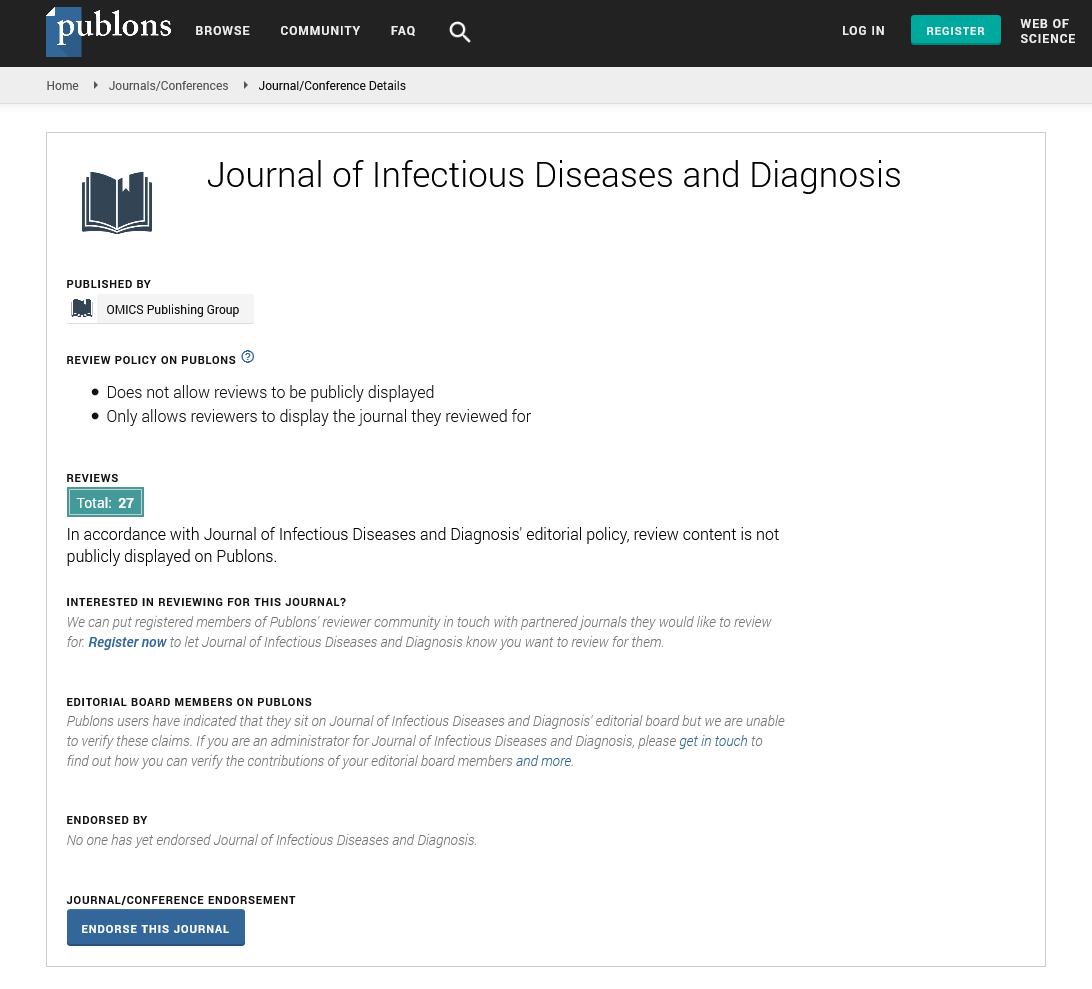Indexed In
- RefSeek
- Hamdard University
- EBSCO A-Z
- Publons
- Euro Pub
- Google Scholar
Useful Links
Share This Page
Journal Flyer

Open Access Journals
- Agri and Aquaculture
- Biochemistry
- Bioinformatics & Systems Biology
- Business & Management
- Chemistry
- Clinical Sciences
- Engineering
- Food & Nutrition
- General Science
- Genetics & Molecular Biology
- Immunology & Microbiology
- Medical Sciences
- Neuroscience & Psychology
- Nursing & Health Care
- Pharmaceutical Sciences
Perspective - (2024) Volume 9, Issue 3
Regulation and Flexibility of Epstein-Barr Virus DNA Replication
Susumu Matsuda*Received: 01-May-2024, Manuscript No. JIDD-24-26003; Editor assigned: 03-May-2024, Pre QC No. JIDD-24-26003 (PQ); Reviewed: 20-May-2024, QC No. JIDD-24-26003; Revised: 27-May-2024, Manuscript No. JIDD-24-26003 (R); Published: 03-Jun-2024, DOI: 10.35248/2576-389X.24.09.271
Description
The Epstein-Barr Virus (EBV), a member of the herpesvirus family, has a remarkable ability to establish lifelong infections in its human host. Central to its persistence is the maintenance and replication of its episomal DNA within the host cell nucleus. The plasticity of DNA replication initiation in EBV episomes is a key feature that ensures the virus's ability to adapt and thrive in various cellular environments.
EBV primarily infects B lymphocytes and epithelial cells, where it maintains its genome as a circular episome. Unlike chromosomal DNA, which is tightly regulated by the host’s replication machinery, the replication of EBV episomes is more flexible, allowing the virus to replicate independently of the host cell cycle. This independence is primarily mediated by the origin of Plasmid replication (oriP) and the Epstein-Barr Nuclear Antigen 1 (EBNA1) protein.
The oriP consists of two main elements: the Dyad Symmetry (DS) element and the Family of Repeats (FR). The DS element serves as the primary initiation site for DNA replication, while the FR element is involved in the segregation of episomes during cell division. EBNA1 binds to both elements, ensuring the episome is both replicated and partitioned to daughter cells. This dual functionality underscores the adaptability of EBV replication mechanisms.
One of the most striking aspects of EBV DNA replication is its plasticity in initiation. Unlike cellular origins of replication, which are fixed and tightly controlled, EBV can initiate replication at multiple sites within the oriP, depending on the cellular context. This flexibility allows the virus to adapt to varying conditions within the host cell, such as changes in the availability of replication factors and alterations in the cellular environment due to stress or immune responses.
Recent studies have revealed that the plasticity of EBV replication initiation is influenced by several factors. The binding affinity of EBNA1 to the oriP elements can be modulated by post-translational modifications, such as phosphorylation and ubiquitination. These modifications can alter the conformation of EBNA1, affecting its ability to bind to DNA and recruit the necessary replication machinery. This modulation provides a mechanism for the virus to fine-tune its replication in response to cellular signals.
Furthermore, the interaction of EBNA1 with host cell proteins also plays a major role in the regulation of EBV replication initiation. Host proteins involved in DNA replication, repair, and chromatin remodeling can interact with EBNA1 and the oriP, influencing the efficiency and timing of episome replication. For example, cellular factors such as the Origin Recognition Complex (ORC) and Mini Chromosome Maintenance (MCM) proteins are recruited to the oriP to facilitate the initiation of replication. The dynamic interaction between viral and host proteins ensures that EBV can efficiently replicate its DNA even under varying cellular conditions.
The plasticity of EBV DNA replication initiation also has implications for viral latency and reactivation. During latency, EBV maintains its genome as an episome in a dormant state, with minimal gene expression and replication. However, upon reactivation, the virus must rapidly increase its replication to produce new virions. The ability to initiate replication at multiple sites within the oriP allows EBV to swiftly ramp up its replication in response to reactivation signals. This flexibility is crucial for the virus to efficiently transition from latency to the lytic phase.
Moreover, the plasticity of EBV replication initiation contributes to the virus's ability to evade the host immune system. By varying the sites and timing of replication initiation, EBV can avoid triggering strong immune responses that are typically associated with high levels of viral replication. This evasion strategy allows the virus to persist in the host for extended periods, contributing to its role in various diseases, including infectious mononucleosis and certain types of cancer, such as nasopharyngeal carcinoma and Burkitt's lymphoma.
Conclusion
In conclusion, the plasticity of DNA replication initiation in Epstein-Barr virus episomes is a fundamental aspect of its biology that enables the virus to maintain persistent infections and adapt to different cellular environments. This flexibility is mediated by the interplay between viral elements, such as oriP and EBNA1, and host cell factors, which together ensure efficient and adaptable replication. Understanding the mechanisms underlying this plasticity provides valuable insights into EBV pathogenesis and may inform the development of targeted therapies to disrupt viral replication and latency.
Citation: Matsuda S (2024) Regulation and Flexibility of Epstein-Barr Virus DNA Replication. J Infect Dis Diagn. 9:271.
Copyright: © 2024 Matsuda S. This is an open-access article distributed under the terms of the Creative Commons Attribution License, which permits unrestricted use, distribution, and reproduction in any medium, provided the original author and source are credited.

